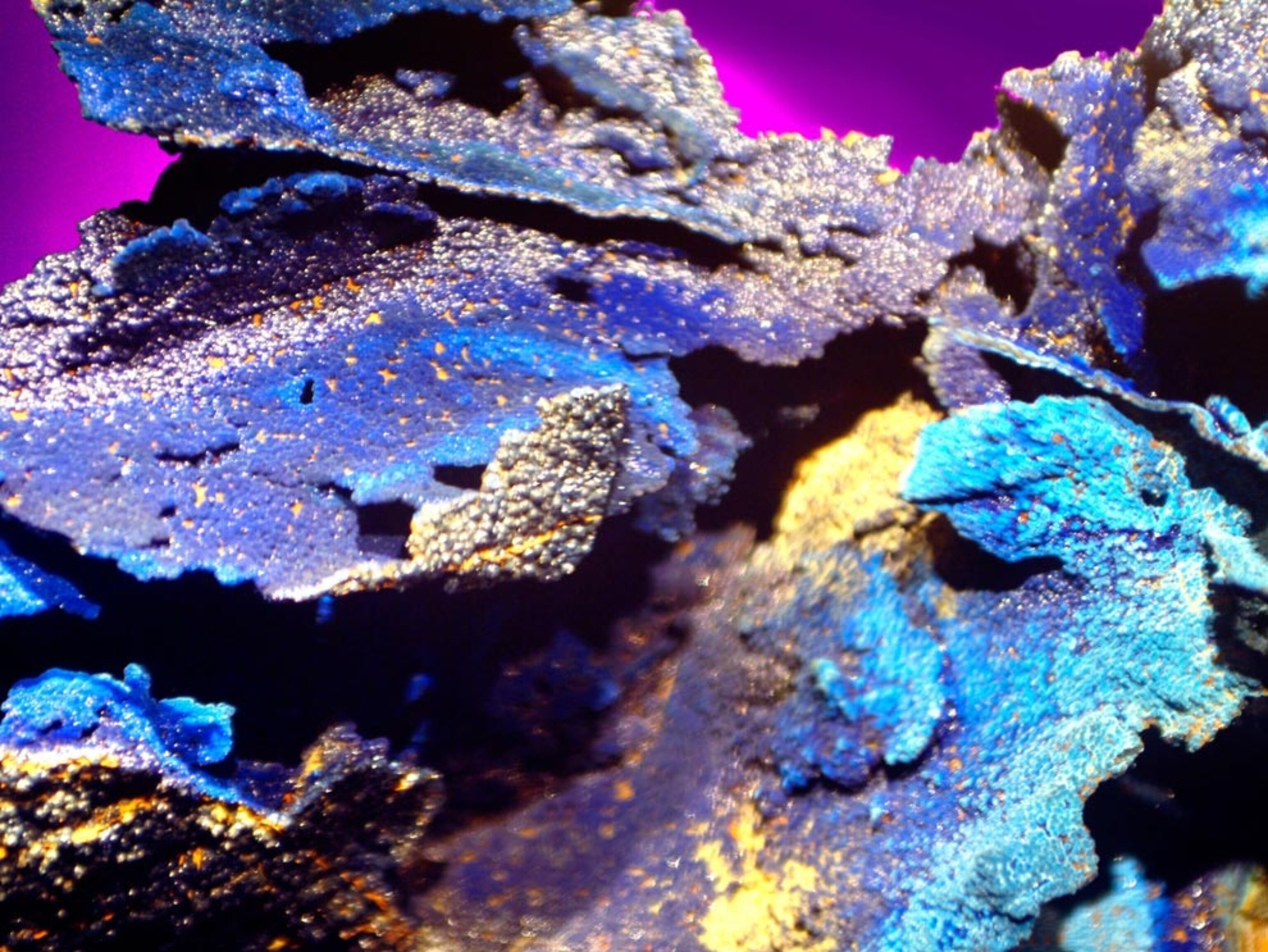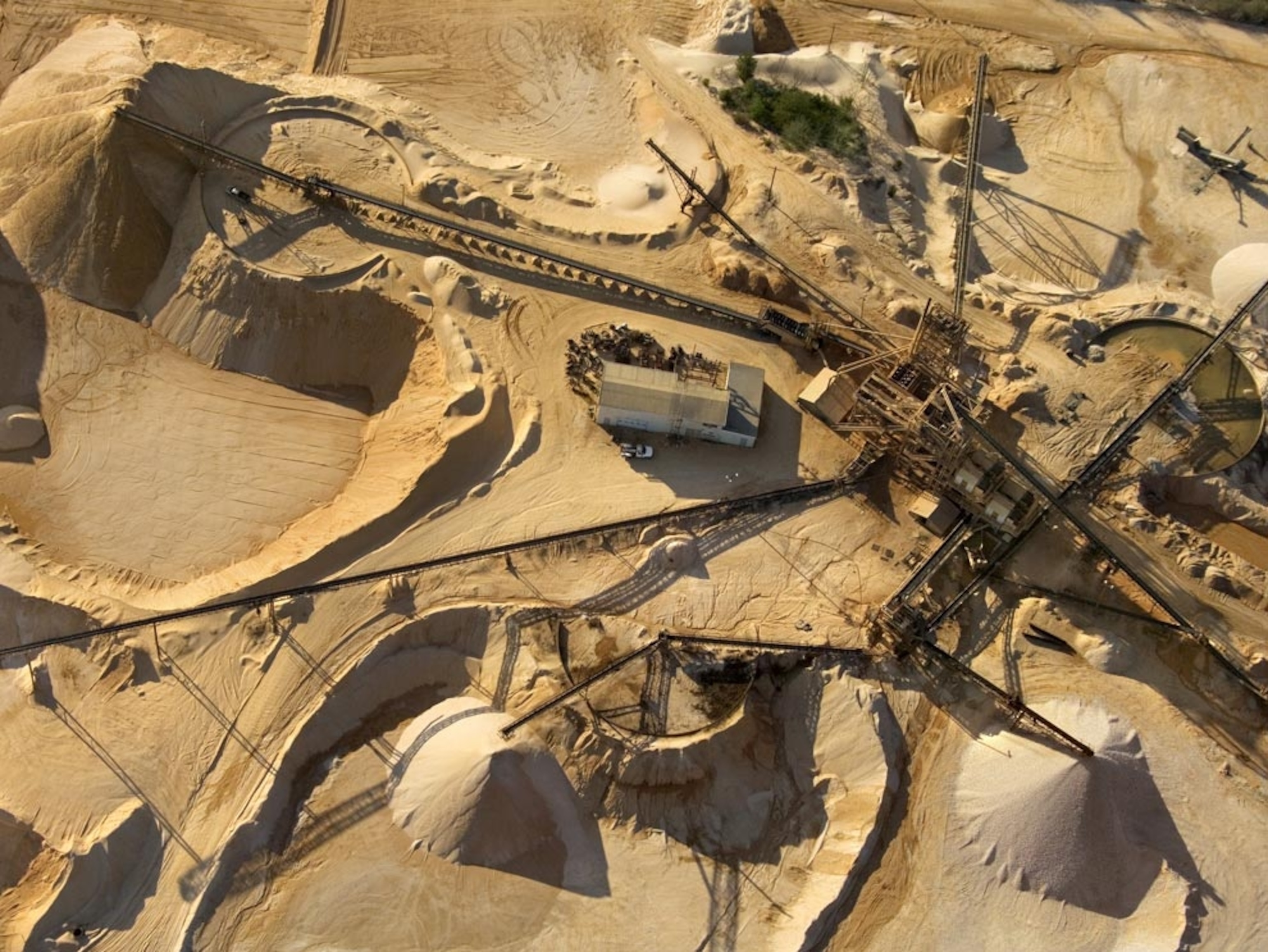More than 4,000 naturally occurring minerals—inorganic solids that have a characteristic chemical composition and specific crystal structure—have been found on Earth. They are formed of simple molecules or individual elements arranged in repeating chains, sheets, or three-dimensional arrays.
Minerals are typically formed when molten rock, or magma, cools, or by separating out of mineral-rich water, such as that in underground caverns. In general, mineral particles are small, having formed within confined areas such as lava flows or between grains of sediments. Large crystals found in geodes and other rocks are relatively rare.
Mineral Photos











Rocks themselves are made of clusters or mixtures of minerals, and minerals and rocks affect landform development and form natural resources such as gold, tin, iron, marble, and granite.
Silicates—including quartz, mica, olivine, and precious minerals such as emeralds—are the most common class of minerals, as well as the major components of most rocks. Oxides, sulfides, sulfates, carbonates, and halides are other major mineral classes.
Gemstones
Many minerals form beautiful crystals, but the most prized of all are gemstones. Uncut gems often look fairly ordinary–like rocks. It's only when they are cut and polished that they obtain the brilliance and luster that gives them their value.
Historically, gems have been divided into precious and semiprecious classes. There are a number of semiprecious gems, many quite beautiful, but diamonds, rubies, sapphires, and emeralds continue to qualify as "precious." (At one time, amethyst was also considered a precious gem, but large reserves were later found in Brazil, reducing its value.)
Precious gems are formed in different ways and composed of different materials, meaning their appearances vary vastly.
- Diamonds, made of carbon atoms, are the hardest natural substance found on Earth. Formed under extremely high pressure hundreds of miles underground, they are found in very few locations around the world. Graphite is also made of carbon atoms, but with a different arrangement—explaining why diamond is the hardest mineral and graphite (used in pencil lead) is one of the softest.
- Rubies are formed of a mineral called corundum, comprised of aluminum oxide. The red color is caused by traces of chromium. Corundum also forms sapphire in many colors, which generally come from trace mixtures of iron, titanium, and chromium.
- Emeralds are formed of a mineral called beryl whose chemical formula is a complex mix of beryllium, aluminum, silicon, and oxygen. The color comes from additional traces of chromium and vanadium. Different trace elements can produce other colors, allowing beryl to form semiprecious stones such as aquamarine.
Minerals and gems are classified by their physical properties, including hardness, luster, color, density, and magnetism. They're also identified by the ways in which they break, or the type of mark, or streak, that they leave when rubbed on a laboratory tool called a streak plate.
Gem Photos










You May Also Like
Go Further
Animals
- Soy, skim … spider. Are any of these technically milk?Soy, skim … spider. Are any of these technically milk?
- This pristine piece of the Amazon shows nature’s resilienceThis pristine piece of the Amazon shows nature’s resilience
- Octopuses have a lot of secrets. Can you guess 8 of them?
- Animals
- Feature
Octopuses have a lot of secrets. Can you guess 8 of them? - This biologist and her rescue dog help protect bears in the AndesThis biologist and her rescue dog help protect bears in the Andes
Environment
- This pristine piece of the Amazon shows nature’s resilienceThis pristine piece of the Amazon shows nature’s resilience
- Listen to 30 years of climate change transformed into haunting musicListen to 30 years of climate change transformed into haunting music
- This ancient society tried to stop El Niño—with child sacrificeThis ancient society tried to stop El Niño—with child sacrifice
- U.S. plans to clean its drinking water. What does that mean?U.S. plans to clean its drinking water. What does that mean?
History & Culture
- Gambling is everywhere now. When is that a problem?Gambling is everywhere now. When is that a problem?
- Beauty is pain—at least it was in 17th-century SpainBeauty is pain—at least it was in 17th-century Spain
- The real spies who inspired ‘The Ministry of Ungentlemanly Warfare’The real spies who inspired ‘The Ministry of Ungentlemanly Warfare’
- Heard of Zoroastrianism? The religion still has fervent followersHeard of Zoroastrianism? The religion still has fervent followers
- Strange clues in a Maya temple reveal a fiery political dramaStrange clues in a Maya temple reveal a fiery political drama
Science
- Soy, skim … spider. Are any of these technically milk?Soy, skim … spider. Are any of these technically milk?
- Can aspirin help protect against colorectal cancers?Can aspirin help protect against colorectal cancers?
- The unexpected health benefits of Ozempic and MounjaroThe unexpected health benefits of Ozempic and Mounjaro
- Do you have an inner monologue? Here’s what it reveals about you.Do you have an inner monologue? Here’s what it reveals about you.
- Jupiter’s volcanic moon Io has been erupting for billions of yearsJupiter’s volcanic moon Io has been erupting for billions of years
Travel
- Follow in the footsteps of Robin Hood in Sherwood ForestFollow in the footsteps of Robin Hood in Sherwood Forest
- This chef is taking Indian cuisine in a bold new directionThis chef is taking Indian cuisine in a bold new direction
- On the path of Latin America's greatest wildlife migrationOn the path of Latin America's greatest wildlife migration
- Everything you need to know about Everglades National ParkEverything you need to know about Everglades National Park




